INTRODUCTION
One of the things Ive always loved about craftingand cross stitch in particularis how connected it makes me feel to the generations of women who came before me, the generation of women stitching with me now, and the future generations of women whom I will teach to stitch. Because, as any stitcher can tell you, when women craft together, they talk, they share ideas, they learn from one another, and then they go get stuff done. So, its completely unsurprising that, for just about as long as decorative stitching and crafting have existed, women have used them as an outlet for rebelling, protesting, demanding rights, and supporting others in those pursuits. Think of the suffragette sashes, cranky passages in 1800s school cross stitch samplers, protest banners, quilts that tell a story, and a certain little pink hat that I think were probably all familiar with by now, just to name a few.
Entire books have been written about how DIY and determination have come together time and again to make trouble, to make change, and to make history. Craft has long walked hand in hand with activism, so its no surprise that the women, men, and non-binary makers of today are using cross stitch, embroidery, and many other creative techniques to speak their minds, share some snark, and celebrate feminism in a way that gives a nod to the past while continuing to stitch our way into the future!
Right now, feminism and feminist ideas are popping up in so many places, and in so many creative ways that are both exciting and inspiring! This beginner-friendly book is a fun way to learn a new skillor brush up on the basicsand bring a touch of bold, bright, and energizing feminist pop culture into your home. So, make something for your office, for your bedroom, or for your BFF. Its the perfect time to cross stitch a little love for your favorite feminist, and this book can help you make it happen!
Haley
TOOLS AND TECHNIQUES
FABRIC
Aida cloth, the most commonly used fabric in modern cross stitch projects, is a woven fabric that contains evenly spaced holes that create a square grid thats perfect for making cross stitches. The patterns in this book are designed for size 14 Aida cloth. (Size 14 means you can make 14 stitches per inch!) You can slightly increase the size of the projects by using size 10 or 12 Aida cloth.
EMBROIDERY FLOSS
The thread used in cross stitch is called embroidery floss. The projects in this book utilize 6-stranded DMC embroidery flosswhich is what youll find in most craft storesand the colors listed in each pattern are labeled with the corresponding DMC color code.
CROSS STITCH NEEDLE
Cross stitch needles have a large eye and a blunt tip, making them the ideal option for both threading embroidery floss and stitching into Aida cloth. For the projects in this book, a size 26 needle pairs perfectly with size 14 Aida cloth.
EMBROIDERY HOOP
Embroidery hoops help hold the fabric taut while youre stitching and are generally available in plastic or wood. For our projects, we used a 6" embroidery hoop.
ADDITIONAL TOOLS
In addition to the cross stitch specific tools above, youll also want to make sure you have the following:
 a sharp pair of scissors to cut your floss or fabric
a sharp pair of scissors to cut your floss or fabric
 a fine-tip water-soluble fabric marker for marking your fabric
a fine-tip water-soluble fabric marker for marking your fabric
 a pencil with an eraser in case you need to mark your pattern
a pencil with an eraser in case you need to mark your pattern
 an anti-fraying liquid to prevent the edges of the fabric from unraveling
an anti-fraying liquid to prevent the edges of the fabric from unraveling
GETTING STARTED
PREPPING THE FABRIC
Your fabric should be the same dimensions as your finished project, plus three or four extra inches added on each side. This will give you a little extra room to play with if you make a mistake and will also allow you to neatly finish or frame the project when youre done.
Once the fabric is cut to size, fold it in half horizontally and finger-press a crease along the fold, then fold it in half vertically and finger-press that crease. The intersection of these two creases will be the center of your fabric. Mark the center square with a water-soluble marker or with a stitch in a floss color that isnt used in the pattern. Then, before you begin stitching, seal the edges of the fabric with anti-fraying liquid.
STITCH SECRET
Remember, size 14 Aida cloth measures 14 stitches per inch, so, even if the finished dimensions of a project arent provided, finding the final dimensions of your project is just a matter of counting the number of squares across or down the pattern grid, and then dividing by 14.
ALWAYS WASH YOUR HANDS
To keep your project clean and avoid transferring dirt and oils from your hands onto your fabric, always wash your hands before touching your project.
USING AN EMBROIDERY HOOP
An embroidery hoop actually consists of two hoops: one slightly smaller hoop on the inside, and one slightly larger hoop on the outside. The larger hoop on the outside will have a screw mechanism on top that will allow you to tighten or loosen it around the smaller hoop.
To use your embroidery hoop, loosen the screw on the larger hoop until the smaller hoop falls free. Center your fabric on top of the smaller hoop, then carefully press the larger hoop into place around the smaller hoop, sandwiching the fabric between the smaller and larger hoops. Tighten the screw on the larger hoop to secure it in place, making sure the fabric remains centered and stretched taut.
USING EMBROIDERY FLOSS
The six strands in each skein of floss are designed to be separated, and only two strands should be used when stitching our patterns. After you cut a length of floss, separate two strands from the rest, then thread your needle. Set the remaining strands aside for later use.
READING A CROSS STITCH PATTERN
In a cross stitch pattern, each square in the pattern grid corresponds with a square on your cross stitch fabric. And, within the pattern grid, each colored square represents one cross stitch in the same square on your fabric.
The most important thing to remember about reading a cross stitch pattern is that counting and cross stitch go hand in handthats why cross stitch is commonly referred to as counted cross stitchand its really the key to success. Always take the time to double-check your stitch counts and grid position to avoid making mistakes that can throw off your whole project or have you pulling out tons of stitches.


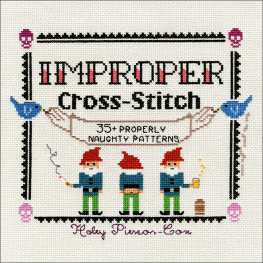
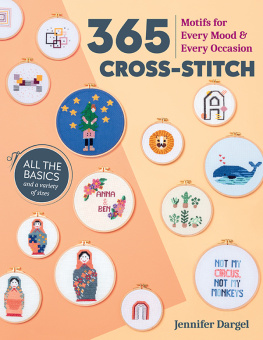

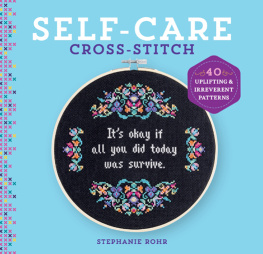
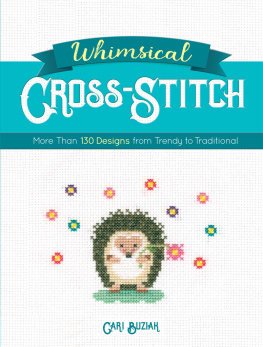
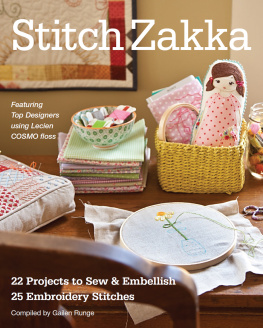

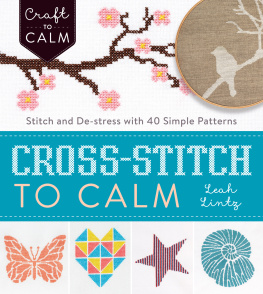
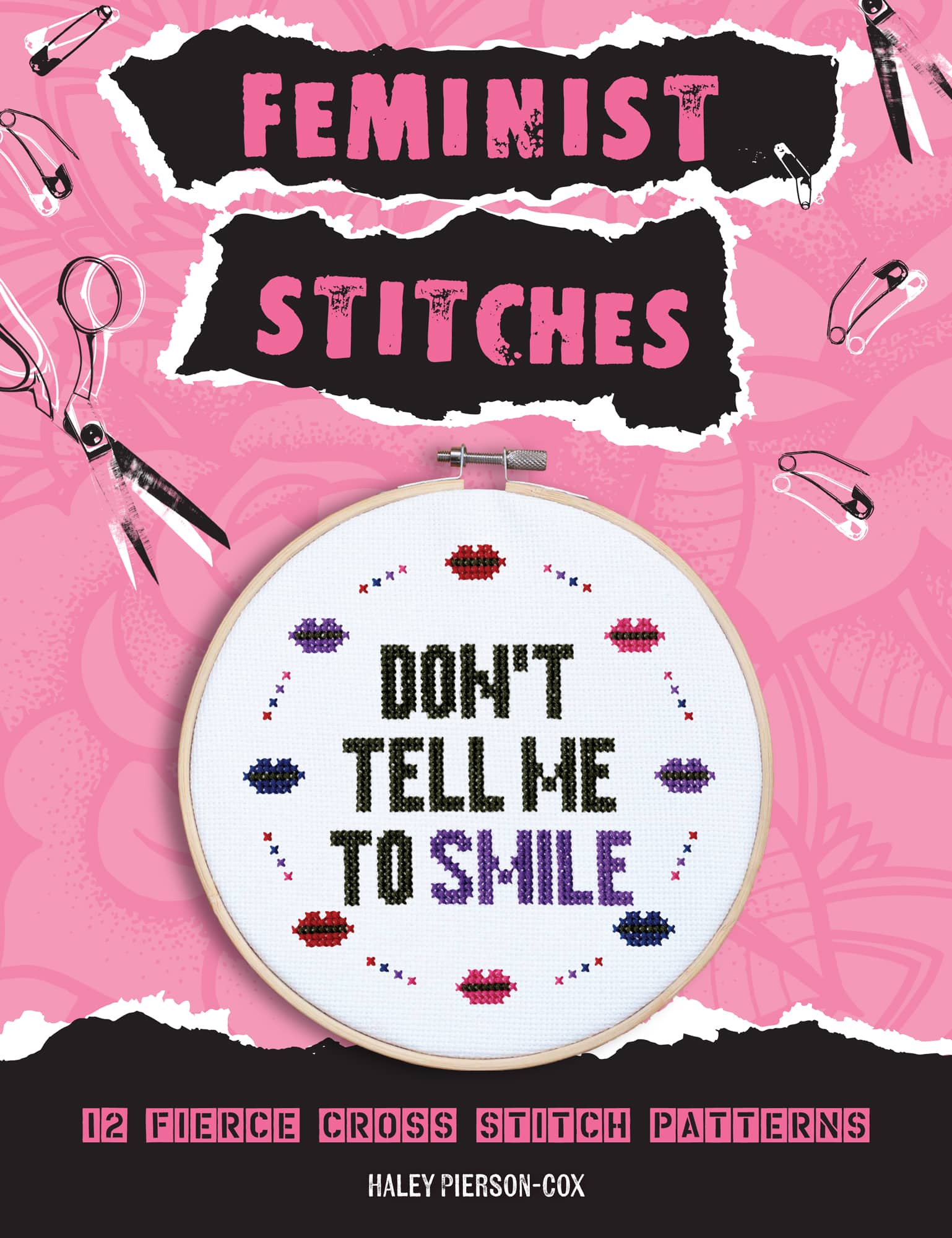




 a sharp pair of scissors to cut your floss or fabric
a sharp pair of scissors to cut your floss or fabric